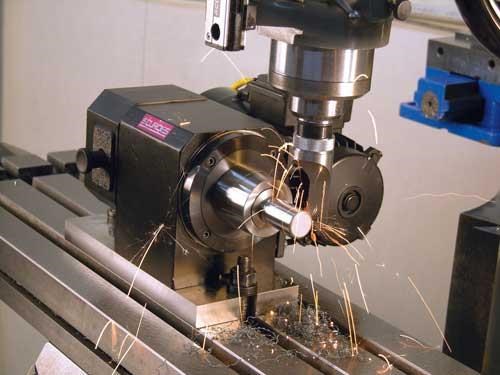Produce a Part More Efficiently with Turn-Milling
Turn-milling is the action of cutting with a rotation milling tool while the workpiece is also rotating.
Sometimes, standard tooling is just not enough. I’m sure you’ve been there—struggling to figure out how to produce a part more efficiently and cost effectively. Turn-milling, or cutting with a rotation milling tool while the workpiece is also rotating, could be a solution for a situation like this.
Challenges such as high-metal removal, interrupted cuts, stringing chips, flexible shafts, tool life, and eccentric diameters or odd shapes are all issues that turn-milling can address. Chip control is another reason to incorporate turn-milling.
Turn-milling usually requires a Y-axis motion. Workpiece rotation is provided by the C-axis motion that delivers the desired feed rate for the milling cutter. The workpiece speed in turn-milling is much slower than in typical turning. Y-axis motion is helpful because the milling cutter has to do most of its cutting off-center. The tool can’t machine the part to size when it is on-center because the tool would be cutting on the center of its face and not on its edges.
However, when the tool reaches a shoulder or a side of a groove, the off-center tool leaves a rounded corner behind. To achieve a sharp corner, the cutter must take a second pass.
To learn more about how turn-milling works and its benefits, read Applying Turn-Milling.
One shop we spoke with didn’t do enough turning work to justify the purchase of a CNC lathe. But when it needs to produce precision turned parts for small lot sizes, it created a process to do that on an existing milling machine. Read Precision Lathe Operations on a CNC Mill, which describes the company’s unique mill-turn operation.

















